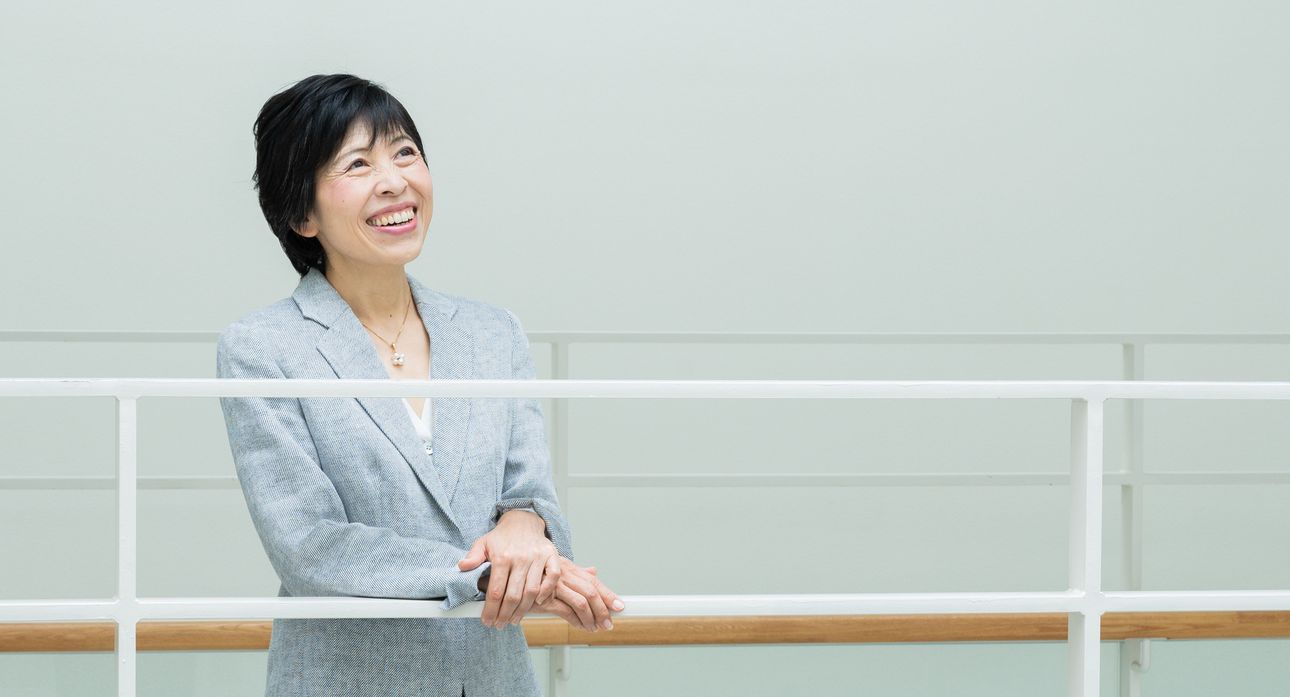
Navigating students through the curriculum
With over 200 degree programs and more than 8,000 courses available each year across 12 undergraduate and 18 graduate schools at Kyushu University, students embarking upon their academic journey can easily fall into the danger of failing to see the big picture of their academic progress.
To better orient students in this forest of programs and labyrinth of courses and save them from a fate of wandering more years than necessary to reach their destination or even giving up hope entirely, Prof. Satoko Fukahori of the Kyushu University Education Innovation Initiative (UEII) is leading the creation of curriculum maps for all the programs.
“Using curriculum maps, students can picture and design the path of their academic progress,” says Prof. Fukahori, who is also Vice President for Education. Curriculum maps are Prof. Fukahori’s brainchild, though she credits them to the tireless work of all the Kyushu University faculty.
A typical curriculum map contains all of the required courses and key elective courses offered at three levels in the program: undergraduate, Master’s, and Doctoral. (Click to read more about the maps.) She has successfully completed curriculum maps for almost all 200 plus degree programs at the university. The maps are currently online in Japanese as static files and are being translated into English as well. Starting in April 2022, students will be able to see both Japanese and English versions of the curriculum maps through the syllabus system.
We asked Prof. Fukahori why she began this mapping project.
Why did you embark upon the curriculum map project?
Curriculum maps are part of our initiatives for student-centered education. In Japan, national universities like Kyushu University have used student handbooks (学生便覧) to help students orient themselves in the degree programs. But these handbooks are closer to a book of law than to, say, a cookbook.
Unlike conventional student handbooks, curriculum maps are for practical use. They help students to get the big picture of the program and understand the purpose of each course they are taking.
The map is two-dimensional and reflects a systematic and gradual learning process. Program goals are arranged vertically from foundational to complex, and courses are arranged in order horizontally, producing a grid that maps all the courses in the program.

I think these curriculum maps will help to break down barriers and enable the students to interact and connect with the curriculum and with the people teaching it in ways that were not possible previously.
The curriculum map project is a collaborative initiative between the UEII and the faculty in each department. How did you succeed in involving the faculty in this project?
The faculty tend to focus more on their individual courses than the program as a whole, on delivering high-quality education within the limit of their courses than coordinating efforts with their colleagues in achieving program-level goals. Such attitudes needed to change. “From my course to our program” is a concept we adopted to describe the shift we are seeking in the faculty’s awareness: from awareness only of their own courses to awareness of the whole and where their courses stand within a given program.
By clearly outlining the concept in this way to get faculty on board, the Kyushu University faculty in all departments were supportive of the Curriculum Map project. That is why I want the students, including prospective students, to know about the work that went into making the curriculum maps. They serve as proof of how serious the Kyushu University faculty are about innovation in education.
In what way do curriculum maps revolutionize education at Kyushu University?
We are currently in the process of creating virtual, interactive curriculum maps for the students. When they select a course on the map, they will be directed to the relevant syllabus containing course information including both program-level and course-level learning goals. Students will be able to connect abstract goals listed in the program’s learning outcomes with more concrete goals of each course in the program.
Furthermore, if they feel there is a disagreement in the alignment of these two sets of goals, students can, using curriculum maps, point to the instructor and ask for an explanation. This is a more powerful way of encouraging instructors to align their courses to the curriculum than, say, us at the UEII asking them to do so.
I want students to find education at Kyushu University attractive, something that they want to be a part of. I think these curriculum maps will help to break down barriers and enable the students to interact and connect with the curriculum and with the people teaching it in ways that were not possible previously.
Also, I want the faculty who come to teach at Kyushu University to be aware of our expectations for high-quality teaching. Thus, we introduce curriculum maps in the new-faculty orientation to emphasize to them how important these collective, program-level learning goals are for each department and the university as a whole.
What is a curriculum map?

At Kyushu University, curriculum maps help students get the big picture of a degree program, orient themselves in the sea of the academic universe, and arrive at their desired destination in life with a degree in hand.
Using curriculum maps, students can
- know the purpose of each course toward obtaining a degree
- learn about the course’s pre-requisites and the courses to follow
- design the path of their academic progress
Curriculum maps are color blind friendly and now available in Japanese for all the 200-plus degree programs at Kyushu University. The maps are two-dimensional and reflect a systematic and gradual learning process. The vertical axis lists program-level learning goals from foundational to complex, and the horizontal axis lists the level of each course from elementary to advanced, mapping all courses in the program within the grid.
Curriculum maps include, aside from courses offered in the field of specialization, the KIKAN courses—Kyushu University’s signature courses specially designed for first- and second-year undergraduate students across disciplines to help them acquire knowledge outside the confines of their major. They also contain data science courses now offered in all programs.
This article will be updated will links when the English and interactive versions become available.
Return to article






























